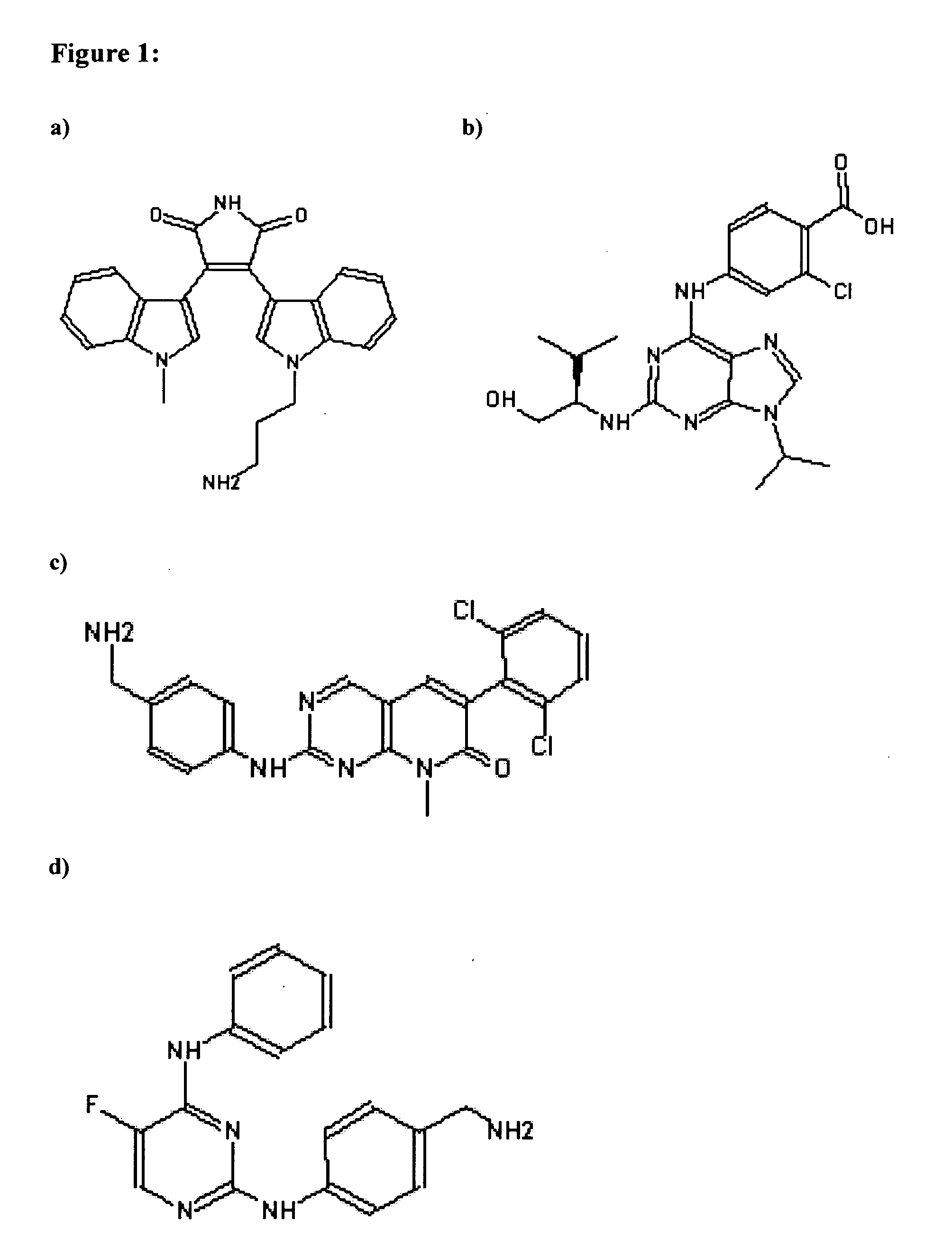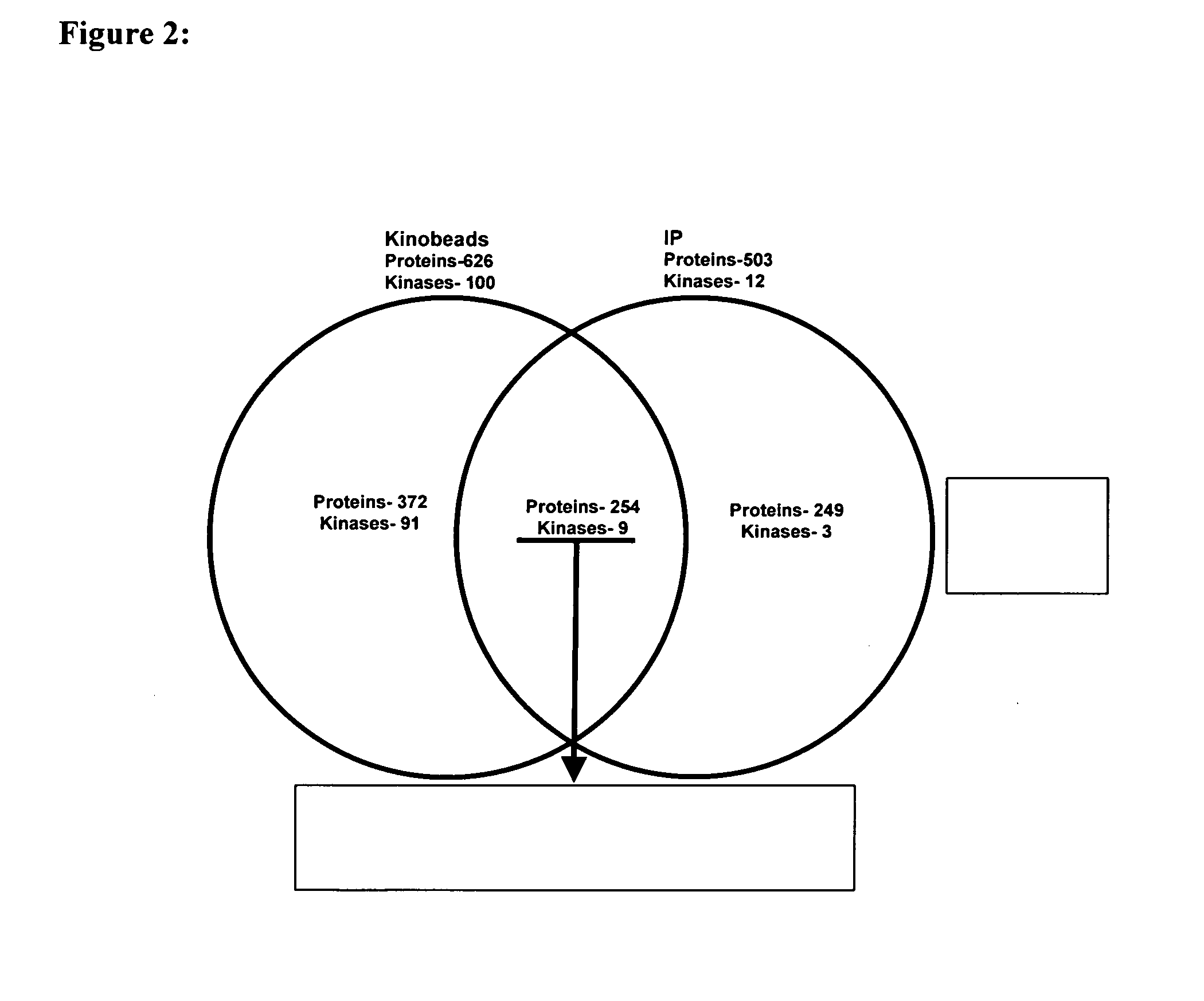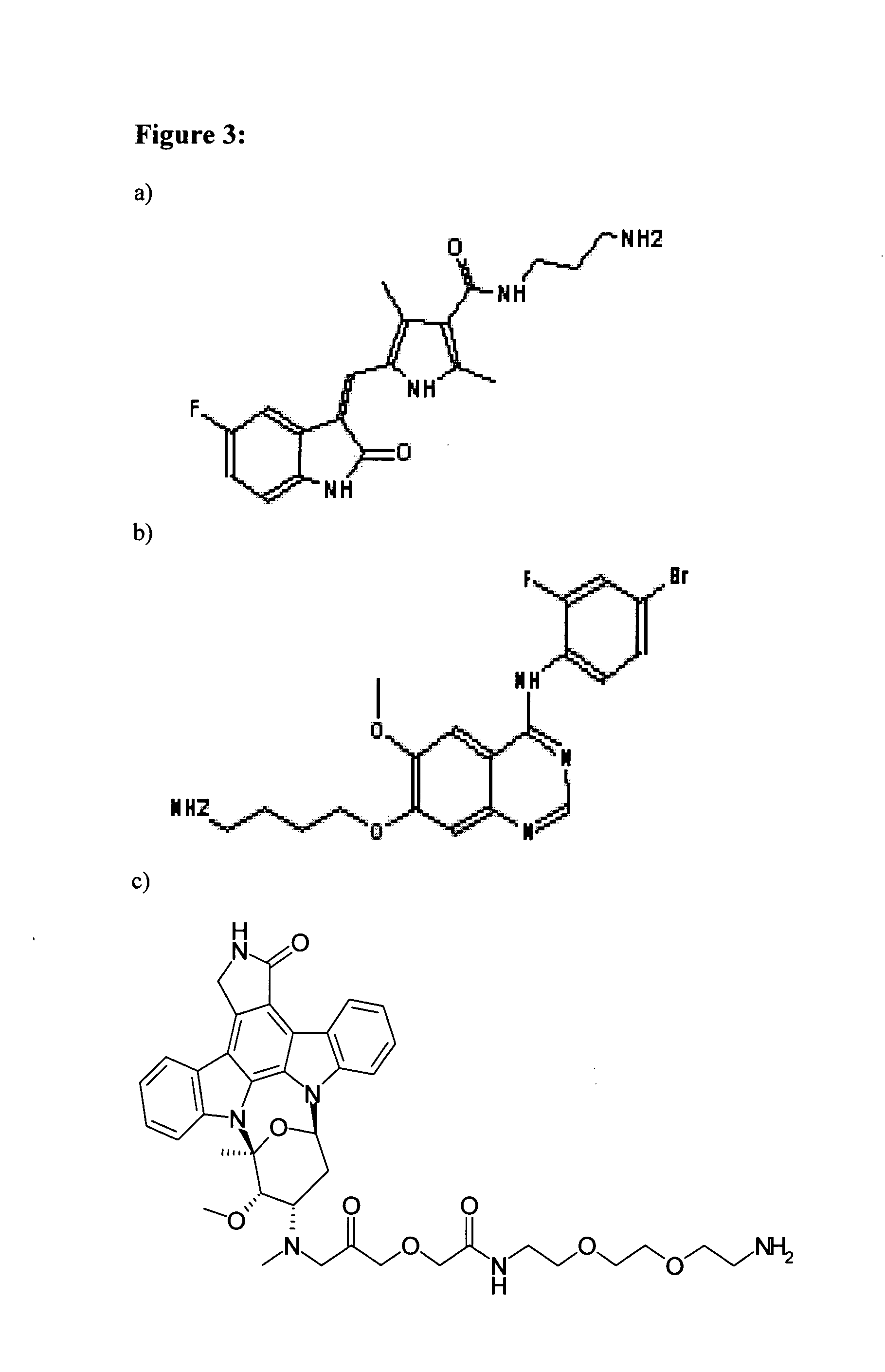Process for the identification of novel enzyme interacting compounds
a technology of enzymes and complexes, applied in biochemistry apparatuses, instruments, peptide/protein ingredients, etc., can solve the problems of inefficient capture of kinases or rapid elution, kinases are not preferentially captured, and it is difficult to develop selective atp-competitive inhibitors, etc., to achieve rapid and focused identification and quantification
- Summary
- Abstract
- Description
- Claims
- Application Information
AI Technical Summary
Problems solved by technology
Method used
Image
Examples
example 1
Preparation of Kinobeads
[0222]This example illustrates the preparation of kinobeads with 4 different ligands. These kinobeads were later used in example 2 and example 3.
[0223]Broad spectrum capturing ligands were covalently immobilized on a solid support through covalent linkage using suitable functional groups (e.g. amino or carboxyl or groups). Compounds that do not contain a suitable functional group were modified in order to introduce such a group. The necessary chemical methods are known in the medicinal chemistry literature and illustrated below.
1. Selection and Synthesis of Ligands
[0224]The following four broad specificity ligands (Kinobead ligands 1 to 4; FIG. 1) were covalently coupled to beads in separate reactions as described below and then the four types of beads were mixed and used for the drug pulldown experiments.
[0225]Kinobead ligand 1: Bisindolylmaleimide VIII-Acetate (Chemical Formula: C24H22N4O2. CH3COOH; MW 398.5; CAS number 138516-31-1; Alexis Biochemicals, AXX...
example 2
Signalokinome
[0271]This example illustrates the treatment of cells with compounds (see particularly the second aspect of the invention). HeLa cells were treated with epidermal growth factor (EGF), a cell lysate was prepared and analysed using Kinobeads (experimental protocol in section 2.1) and mass spectrometry. The preparation of Kinobeads is described in Example 1.
[0272]In parallel the cell lysate was subjected to immunoprecipitation with an anti-phosphosphotyrosine antibody (experimental protocol in section 2.2) and analysed by mass spectrometry.
[0273]The result (FIG. 2) shows that kinobeads identify significantly more kinases (Table 8) compared to the immunoprecipitation procedure (Table 6).
1. Preparation of the Biological Sample (Cell Lysate)
1.1 Cell Culture and Treatment of Cells
[0274]Cell culture. HeLa cells (American Type Culture Collection-No CCL-2) were grown in MEM medium (without L-Arginine and without L-Glutamine; Promocell C-75280), 10% dialyzed Fetal Bovine Serum (Gi...
example 3
Screening Assay using Test Compounds for Protein Elution
[0345]This example illustrates competitive elution of proteins bound to kinobeads with non-modified test compounds (see particularly the fourth aspect of the invention). The kinobeads (as described in example 1) were contacted with mouse brains lysate, bound proteins were eluted with various test compounds and the released proteins were analysed by mass spectrometry.
1. Preparation of the Biological Sample (Tissue Lysate)
1.1 Preparation of Lysates
[0346]A mouse brain lysate was prepared by mechanical disruption in lysis buffer (5 ml buffer per mouse brain) under gentle conditions that maintain the structure and function of proteins. The following steps were performed:[0347]Thaw the tissue quickly at room temperature or 37° C., then transfer tissue to a glass bottle containing the 1× lysis buffer (use a vial big enough to be used with Polytron PT 3100 homogenizer)[0348]Lyse the organ / tissue with 4×10 sec pulses at 5000-7000 rpm at...
PUM
| Property | Measurement | Unit |
|---|---|---|
| ionic strength | aaaaa | aaaaa |
| molecular weight | aaaaa | aaaaa |
| molecular weight | aaaaa | aaaaa |
Abstract
Description
Claims
Application Information
 Login to View More
Login to View More - R&D
- Intellectual Property
- Life Sciences
- Materials
- Tech Scout
- Unparalleled Data Quality
- Higher Quality Content
- 60% Fewer Hallucinations
Browse by: Latest US Patents, China's latest patents, Technical Efficacy Thesaurus, Application Domain, Technology Topic, Popular Technical Reports.
© 2025 PatSnap. All rights reserved.Legal|Privacy policy|Modern Slavery Act Transparency Statement|Sitemap|About US| Contact US: help@patsnap.com



